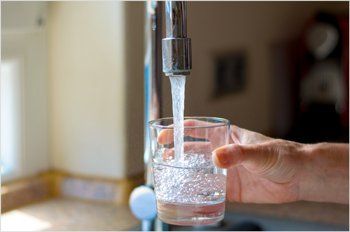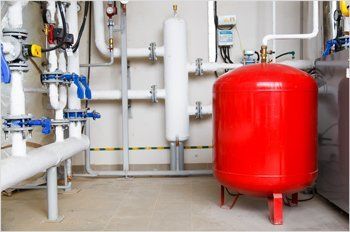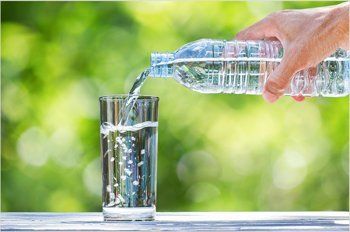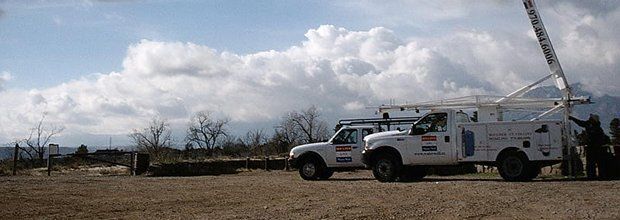Potable Water
Make sure that the water you’re using is safe and potable. At Boulder/GNC Water Well, we recommend that water, especially well water, should be tested on a yearly basis. Contact our professionals to perform a coliform test on your well water.
Benefits of Chlorination
If your well water fails the coliform test, we suggest that you chlorinate your water system. Chlorination can disinfect your water system and get rid of the harmful bacteria.
However, if the bacteria are in the aquifer or if your well is in an unsanitary condition, the bacteria will more than likely return. That being said, chlorination can be used as a first step in solving most bacterial contamination problems.
Chlorinate Your Water
Chlorine can be used to disinfect your water system effectively. If your well is the source of the contamination, follow these steps for chlorination:
- Remove the well cap, concrete lid, or pipe plug to allow direct access to the well. Attach one end of a hose to an outside faucet. Place the other end into the well so that it discharges into the well
- Run water through the hose and into the well at the rate of 1 to 3 GPM. While you’re running the water into the well, pour the amount of bleach as determined by the chart in section #3 (5.25% Sodium Hypochlorite, unscented only) into the well
- Continue running the water for 20 to 30 minutes or until approximately 100 gallons of water has been run back into the well
- When the water coming out of the hose smells of chlorine, spray it over the walls of the well as well as the seal, cap, or concrete outside the well. Be careful of the electrical wiring and turn off the hose
- Inside the house, open one cold water faucet at a time and let it run until you smell the chlorinated water. Turn off the faucet and repeat this process with every cold water faucet in the house
- Turn on one hot water faucet and run until the chlorine smell is detected. This may take several minutes to do because hot water heaters have a large volume of water to displace. Repeat the process with the other hot water faucets until chlorinated
- Chlorine must stand in the pipes for a minimum of eight hours and a maximum of 36 hours to be effective. During this period, you’ll need an alternative source for drinking, cooking, laundry, and plant watering
If you have a cistern or any other type of storage tank, it’s possible that this is the source of your water contamination problem. Airborne bacteria can enter the cistern and propagate in its unique environment. You can follow the steps listed above to chlorinate the water in your cistern.
Keep in mind that the volume of the cistern (from 100 to 3,000 gallons) is a factor in the dilution of the chlorine. Occasionally, the cistern will need to be chlorinated separately. At this point, direct the hose into the cistern and create a swirl in the entire volume of the tank.
Next, add 1 cup of chlorine per 31 gallons of stored water while continuing to put water in the cistern. Continue this process until the water from the hose smells of chlorine; then, wash down the walls and the lid of the tank as you did with your well.
The volume of water treated predominantly determines the amount of chlorine to be used. Well drillers and pump installers often use 100 parts per million (ppm) of chlorine to disinfect the well after their work. This is significantly higher than the amount a household treatment will require.
Generally, around 1+ppm of free chlorine is sufficient for household treatments. A chlorine test kit may be used to measure the concentration. The chart given below shows the concentration needed for 100 ppm in 100 feet of water as recommended by the USDA.
USDA Recommendations
Chlorine compound required to dose 100 feet of water at 100 ppm.
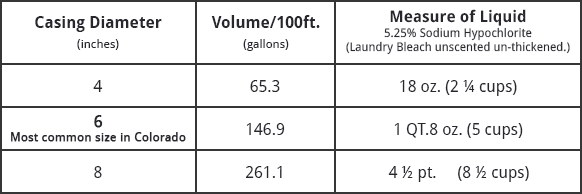
Post-Chlorination Care
Your water will be quite strongly chlorinated when you finish the treatment. To remove the chlorine from the water, the well and / or cistern must be emptied of the chlorinated water. You can do this by watering your lawn. Chlorine dissipates from water when sprayed into the air.
During winter or when the water supply is limited, it’s advisable to have an alternative source of water for drinking, cooking, watering indoor plants, and so on until the chlorine is at a more tolerable level. To check whether the water you’re going to use is safe and potable, perform another test 24 hours after chlorine is no longer detected in the water.
Coliform treatment should be given on an ongoing basis. There are several methods that can be applied. Contact us and let our professionals help you decide which one is best for your home.
Reverse Osmosis Drinking Water Systems
Most R/O systems filter water to a bottled water quality level of purity. Water initially passes through a sediment filter which physically removes suspended particles. The reverse osmosis membrane then removes dissolved material in the water, which then enters a small storage tank prior to activated carbon filtration. The carbon filter removes any remaining tastes and odors from the water. To improve the R/O’s effectiveness, many water supplies may require other pre-conditioning units. We suggest a wide spectrum analysis of the water be performed prior to any treatment installation.


